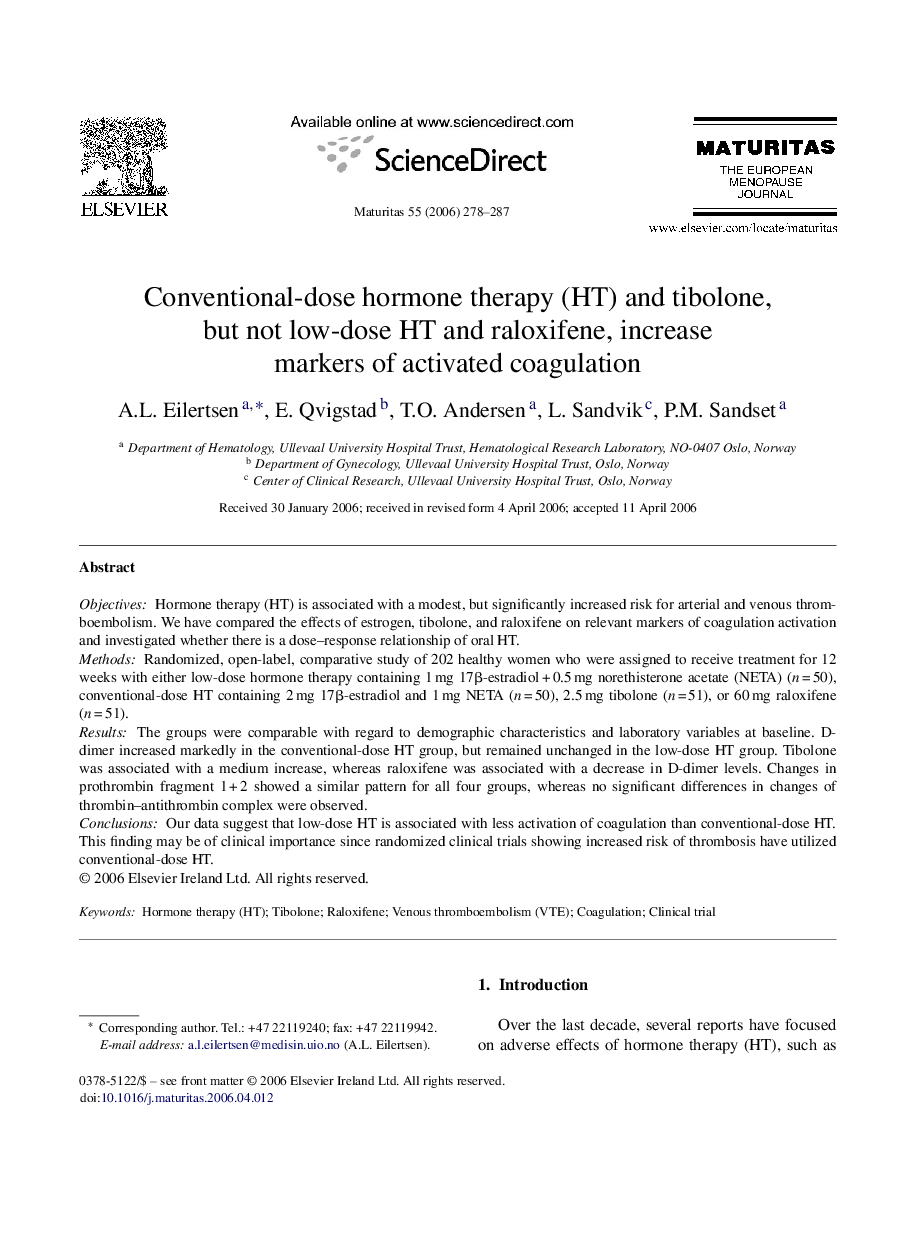| Article ID | Journal | Published Year | Pages | File Type |
|---|---|---|---|---|
| 1918972 | Maturitas | 2006 | 10 Pages |
ObjectivesHormone therapy (HT) is associated with a modest, but significantly increased risk for arterial and venous thromboembolism. We have compared the effects of estrogen, tibolone, and raloxifene on relevant markers of coagulation activation and investigated whether there is a dose–response relationship of oral HT.MethodsRandomized, open-label, comparative study of 202 healthy women who were assigned to receive treatment for 12 weeks with either low-dose hormone therapy containing 1 mg 17β-estradiol + 0.5 mg norethisterone acetate (NETA) (n = 50), conventional-dose HT containing 2 mg 17β-estradiol and 1 mg NETA (n = 50), 2.5 mg tibolone (n = 51), or 60 mg raloxifene (n = 51).ResultsThe groups were comparable with regard to demographic characteristics and laboratory variables at baseline. D-dimer increased markedly in the conventional-dose HT group, but remained unchanged in the low-dose HT group. Tibolone was associated with a medium increase, whereas raloxifene was associated with a decrease in D-dimer levels. Changes in prothrombin fragment 1 + 2 showed a similar pattern for all four groups, whereas no significant differences in changes of thrombin–antithrombin complex were observed.ConclusionsOur data suggest that low-dose HT is associated with less activation of coagulation than conventional-dose HT. This finding may be of clinical importance since randomized clinical trials showing increased risk of thrombosis have utilized conventional-dose HT.
